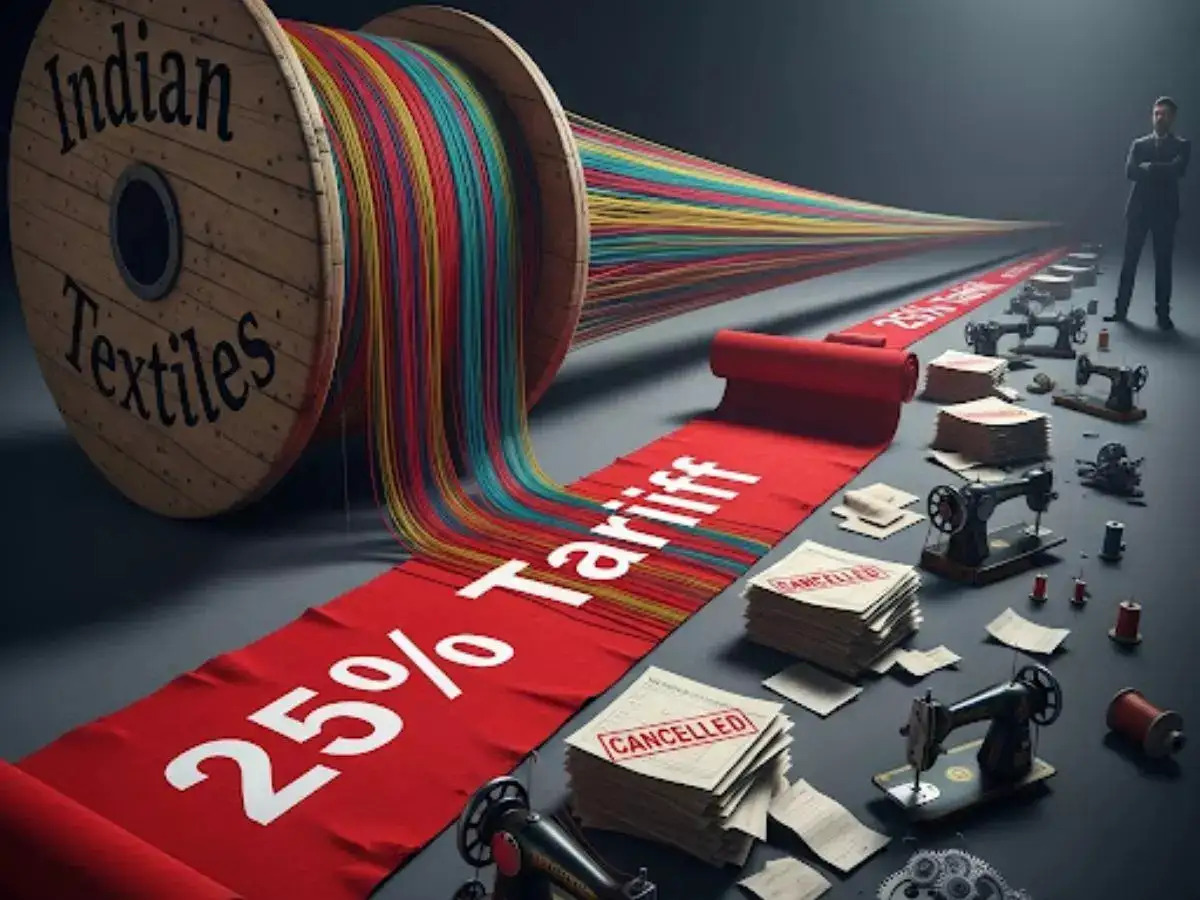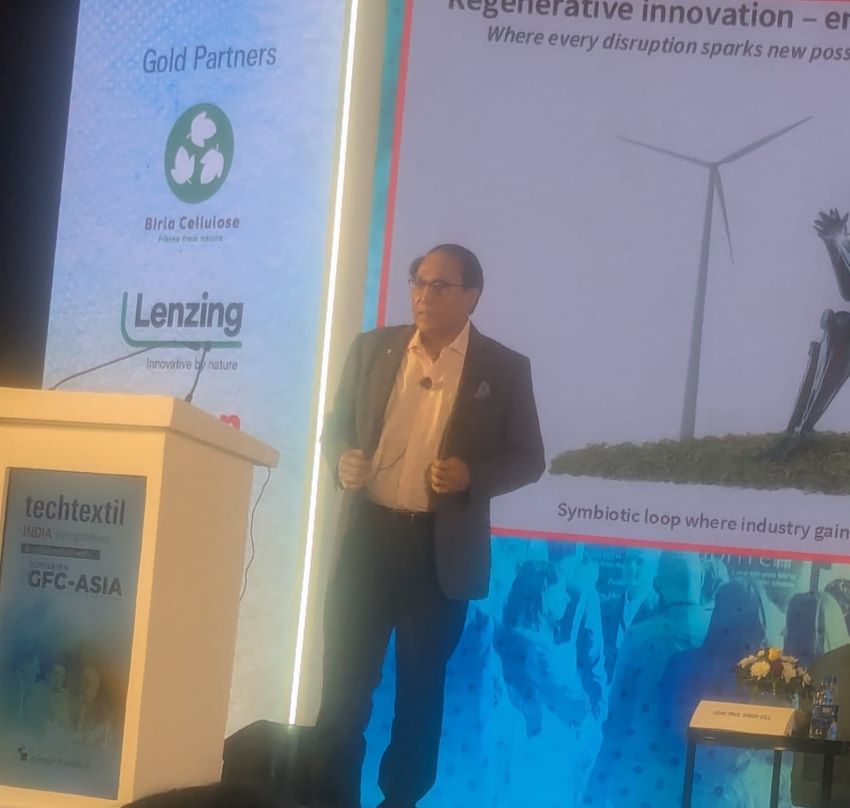FW
India’s first special storage facility for handling raw cotton was launched at the Dakshin Bharat Gateway Container Terminal, the Thoothukudi VOC port. An initial step towards establishing the ambitious Free Trade Warehousing Zone (FGTWZ) at the Thoothukudi Port will reintroduce cotton trade in a big way, said VOC chairman S Anantha Chandra Bose.
The facility set up by the port estate can house around 500, Equivalent Units (TEU) of 40 foot container at the custom bonded area of Dakshin Bharat Gateway Container Terminal in berth number 8. International traders can stock raw cotton at the facility for a period of 30 days free of cost.
The raw cotton storage facility will lead to commissioning of the FGTWZ at Thoothukudi Port, with world-class infrastructure for warehousing of raw cotton, state-of-the-art equipment, transportation and handling facilities, commercial office space, water, power, communications and connectivity, and one-stop clearance of import and export formality. The facility would help textile mills to get cotton at international price within a short span of one week, thereby increasing the yarn production in Tamil Nadu. The facility would have a rippling effect by strengthening the textile value chain particularly knitting, weaving, garment, textile processing, apparel sector etc. The initiative will also help spinning mill owners to buy cotton at competitive prices in the Indian market.
M Senthil Kumar, Chairman, Southern India Mills’ Association (SIMA) points out, the price of cotton was highly volatile and many industries in the small and medium scale category could not sustain the variations as it takes at least a month to buy cotton consignment from abroad.
The turnover of German textile and clothing sector for the first five months grew by 0.9 per cent. In all there were 0.6 per cent more people employed in the sectors than in the same period of 2016.
Effective working hours in May increased in textiles by 9.4 per cent and in clothing by 5.1 per cent. Domestic production of textiles improved in May by 4.1 per cent. However, the clothing sector decreased its production by 2.3 per cent as against 2016. Orders for textile segment increased end of May by 15.9 per cent as against 2016. The increase in orders for the clothing segment was 1.8 per cent. Producer prices were practically stable in both segments. As of May prices in the textile sector were up 0.4 per cent, in clothing 0.2 per cent.
Turnover of clothiers increased by 23.3 per cent. As of May turnover at specialist retailers sank by 0.3 per cent. This is in contrast to German retailers who registered a plus of 3.6 per cent. Foreign trade increased in May for the sectors, particularly in the clothing sector by 13.5 per cent whereas in textiles it resulted only a plus of 1.4 per cent, meaning a plus for both segments of 8.3 per cent. The clothing sector was able to increase considerably its deliveries to Switzerland.
Cambodia’s garment exports grew just four per cent in the first six months of the year. In the same period last year, growth was nine per cent. The slowdown may be due to a 2.3 per cent drop in exports to the United States amid stronger competition from Vietnam and Myanmar.
Increases in Cambodia’s minimum wage were also a factor, leading to higher production costs. Cambodia’s new minimum wage is more than double the minimum wage for garment workers in Bangladesh. Cambodia’s exporters may face more challenges ahead. With the World Bank’s upgrade of the economy last year to lower-middle income country status, Cambodia will no longer receive preferential trade access in the European Union over the next three years.
Foreign direct investment in the garment sector dropped by about 30 per cent in the first quarter of 2017 compared to a five per cent drop in the same period last year. Cambodia is the fifth biggest supplier of garment and textile products to the European Union. It’s behind China, Bangladesh, Turkey and India.
Cambodia’s garment exports to the EU grew by 14 per cent in 2016. The country’s growth in the EU market was largely the result of preferential treatment under the Everything But Arms agreement, which allows its garment products to enter the EU market duty-free due to its status on the list of least developed countries.
The Modern Ethnic Design Center (MEDC) in Cambodia has been teaching students how to tap into the international market, blending Khmer and European design. Throughout the last year, 14 Cambodian students have spent time learning to adapt traditional Cambodian fabrics and patterns for the European market, employ sustainable production practices and work with local suppliers.
About half the students had been working in garment or textile industry already. They are shown how to simplify patterns so they appeal to the foreigner. They incorporate patterns inspired by Angkor Wat and dragon scales into modern products.
The MEDC also helps students adjust their products to fit their target market. Since naturally dyed fabrics are often above the local price range, they are encouraged to tailor their collections for 25- to 45-year-old foreigners. Some of them in future hope to bring their designs to the US by selling on Amazon.
Students are also given advice on how to capitalize on a growing international demand for unique, sustainably sourced products. MEDC focuses on using traditional Cambodian weaving methods of silk and cotton, as well as patterns such as ikat (a dyeing technique), in the loose fitting, casual chic styles preferred in Europe at the moment.
"Hong Kong’s textile exports seen degrowth lately. In 2016, it fell 13 per cent and now another 7 per cent in the first five months of 2017. Re-exports, accounting for more than 99 per cent of total textiles exports, also fell 7 per cent, while domestic exports rose 2 per cent. With more than three-quarters of the textile re-exports originating from Chinese mainland, Hong Kong’s re-exports of textiles of China origin registered a decrease of 6 per cent in January-May 2017."
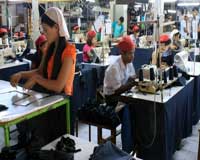
Hong Kong’s textile exports seen degrowth lately. In 2016, it fell 13 per cent and now another 7 per cent in the first five months of 2017. Re-exports, accounting for more than 99 per cent of total textiles exports, also fell 7 per cent, while domestic exports rose 2 per cent. With more than three-quarters of the textile re-exports originating from Chinese mainland, Hong Kong’s re-exports of textiles of China origin registered a decrease of 6 per cent in January-May 2017.
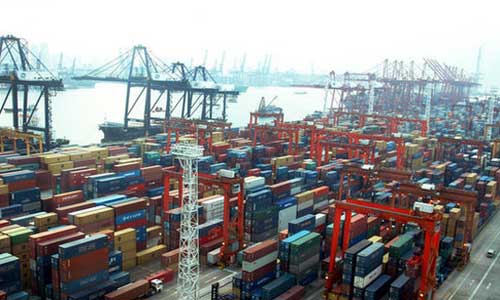
Asia accounted for 93 per cent of Hong Kong’s textile exports in the first five monthsof 2017. Other major export markets of Hong Kong textiles include Vietnam, Bangladesh, Cambodia, Indonesia, Sri Lanka, the US, India, Thailand and the Philippines. In particular because of Vietnam’s cheap labour compared to neighbouring countries and WTO membership, many foreign investors, including those from Hong Kong, have set up garment factories there. This gives rise to sustained demand for textile imports, making Vietnam the second largest market for Hong Kong’s textile exports, after the Chinese mainland. Talking about products, Hong Kong’s exports of knitted or crocheted fabrics, textile yarns, woven fabrics, textile made-up and floor coverings registered respective declines of 3 per cent-64 per cent in the first five months of 2017. However, finishing accessories and special yarns and fabrics increased by 3 per cent and 2 per cent, respectively, in the first five months of 2017.
Industry trends
With rising labour costs, volatile raw material prices and stringent environmental regulations on the Chinese mainland, many Hong Kong's textiles manufacturers have relocated their production facilities to other South-east Asian countries, like Vietnam, Cambodia, Myanmar and Bangladesh. A few companies have even set up offshore production in Latin America (e.g. Mexico) and Africa (e.g. Nigeria) to take advantage of preferential treatments allowed by regional trade agreements such as North American Free Trade Agreement (NAFTA) and the EU’s GSP scheme.
Product trends
Among various kinds of fibres, cotton remains the most preferred material for consumers. Cotton-rich apparel continues to attract European consumers, while consumers in China, India and Japan agree that cotton and cotton blend are the most comfortable, authentic and sustainable, compared to other man-made fibres. Microfibres are attracting textiles manufacturers as they are light in weight and have superior performance in keeping warm. These days more and more breathable, flexible, anti-bacterial, anti-ultraviolet, wrinkle-free, water-resistant and eco-friendly materials are invented and marketed. For instance, TENCEL® invented by Lenzing Group is a kind of lyocell fibre that possesses several functional advantages over cotton, while Salvatore Ferragamo has pioneered the use of sustainable fabrics made from citrus fruit.
Technovation
Technology and innovation are yet again set to rule the textile world. Fancy weaves and prints will give more flexibility in the choice of manufacturing processes, while digital prints, as well as artisanal decoration, will make textiles more malleable. Additionally, hand-crafted excellence, original visuals and exceptional handles will continue to be sought after, given consumers’ ever-growing appetite for uniqueness and distinctiveness. Solar-powered handbag made of a textile photovoltaic surface that powers a battery inside to charge a mobile phone and ‘climate costumes’ that sense changes in carbon emission with light patterns using conductive thread and LEDs are just some examples of how technical textiles are shaping the future textiles industry. As wearable technologies are becoming more accessible, technical textiles are widely applied over a wide range of industries such as automobile, aerospace, architecture, healthcare and sports. Luminescent and heated garments as well as smart knee bandages are cases in point.
Eco-consciousness
To comply with global trends of green manufacturing, more textile corporations have adopted the bluesign® standard – one of the industry’s major voluntary standards for environmental sustainability. Consumers in West Europe, the US and Japan, are stringent about the environmentally friendly properties of biodegradable natural fibres like organic cotton, soy fibre and ahimsa silk. To keep up with this trend, manufacturers have also expanded their production of green textiles by utilising more bio-degradable materials and environmentally-friendly manufacturing processes, including high-efficiency management practices, process control, special processes, and recycling of wastewater.
Product safety
Besides going green, companies are paying utmost attention on product safety. For instance, a number of disqualified apparel fibres consisting of unsatisfactory levels of pH value, formaldehyde content and banned azo dyes have been reported on the Chinese mainland in recent years. In fact, Chinese consumers are increasingly in favour of foreign apparel brands, which usually guarantee product safety. Meanwhile, in traditional markets, for example, the EU’s Rapid Alert System for Non-Food Products (RAPEX) revealed that textiles, clothing and fashion items were the third most common product category notified (behind only toys and motor vehicles), representing 13 per cent of the total number of notifications of dangerous products in 2016.
Three day, Cairo Fashion and Tex will be held from September 13 to 16, 2017. This is an exhibition for specialized in yarns, textiles, garments and trimming supplies and accessories. Among the exhibits will be cotton fabrics, linen, shawls, jute apparel, travel bags, perfumes, textile finishing machinery, cosmetic sets, sports wear, medical clothing, sport socks, casual apparel, shoes and blazers.
India too put up a pavilion to enable Indian companies get first-hand inputs about the status of Egyptian market in terms of textiles, and specific preferences of Egyptian customers about products, designs and colors, the Synthetic and Rayon Textiles Export Promotion Council will visit Cairo for a recee and get an idea of buyers’ requirements and enable Indian participants to present what’s trending and in demand.
Egypt has established strong links between production and exports to form a harmonious scheme aiming at boosting exports and upgrading the national industry through modern international technology and expertise.
The show will be attended by professionals, key decision makers, buyers, suppliers, traders, distributors and more. India is the world’s second largest producer of synthetic fiber, yarn, cotton, cellulosic fiber as well as silk.
The Alliance for Bangladesh Worker Safety recently announced that during the month of July, 26 additional Alliance-affiliated factories completed all material components outlined in their Corrective Action Plans (CAPs), bringing the total number of factories to have completed their CAPsto 118.
These include: Ananta Casualwear, Adhunik Poshak Shilpa, Alamode Apparels, Alliance Knit Composite, Rising Knit Textiles, Salek Textile, Shams Styling Wears, Thanbee Print World, That’s It Garments, Tip Top Fashions, Voyager Apparels and Wear Mag.
Each garment worker has a right to a safe workplace, says Alliance Country Director Jim Moriarty. This past month’s success reinforces the confidence that Alliance factories will have substantially completed remediation and bewell on the way to developing a sustainable culture of safety before the Alliance sunsets in 2018.
The Alliance also continued to enforce accountability measures for factories that failed to make adequate remediation progress. In July, one factory was suspended from the Alliance compliant factory list, bringing the total number of suspended factories to157.
The complete list of factories that have achieved substantial completion of their CAPs, as well as those that have been suspended, can be found on the Alliance website.
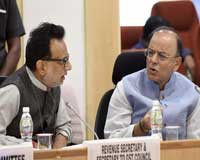
This 5 percent GST rate reduced from 18 per cent announced earlier, will be applicable for job works in apparel, shawls and carpets.
Acceding to demands from the industry, The Goods and Services Tax (GST) Council decided to reduce the GST rate on all job works related to the textile and apparel sector to 5% from 18%. In case of some sectors like yarns and fabrics, the tax on job works was earlier slashed to 5%, but with Saturday’s decision, the benefit of lower tax will be available to all job works in the sector. In a move that would cut the cost of project execution in the government sector, the GST on work contracts in the state-sector has been reduced 18% to 12% with full input tax credit.
SIMA hails GST reduction on textile job work.

The Southern India Mills Association (SIMA) welcomed the centre's move to bring down the GST rate on textile job work from 18 per cent to 5 per cent. All the textile job works, being the manufacturing activities, had been exempted from the service tax in the pre-GST regime. But, the job workers could not avail the input tax credit that had been increasing the cost of the products and affecting the export competitiveness and also the domestic consumers, a release from SIMA said.
Therefore, the industry has been demanding to classify all the textile job works under 5% GST rate service list. But, the GST council had classified only the textile yarns (other than MMF and filament) and textile fabrics under 5% and therefore all other job works especially garments and made-up that creates 70 to 120 jobs per Rs 1crore of investment, especially for the rural masses and women folks were affected due to inverted duty. In addition, over 85% of the textile manufacturing units under take only job work.
M Senthilkumar, chairman of SIMA said 5 per cent GST rate on job works would enable to take full input credit and also avoid any inverted duty and strengthen the global competitiveness of the textile industry apart from benefiting the domestic consumers.
Garment manufacturers cheer GST rate cut in job work.
Garment manufacturers too have welcomed the government's decision to cut service tax (goods and services or GST levy) on the third-party services popularly known as job work.
"We welcome the decision. This is a major relief for the garments sector. The rate of 18 per cent was the biggest impediment for the growth of the garments sector. With this relief garment sector in India will see a major jump in coming days," said Rahul Mehta, President, Clothing Manufacturers Association of India.
In the unorganised garment sector, almost 75 per cent depends on job work such as stitching, trading and other associated work. The sector feared hundreds of thousands of job losses with high tax on third party work.
"It was a great platform for companies eying to connect with British brands, at the recently concluded London Textile Fair, held at the London Design Centre in Islington. As John Kelley, show organiser and Textile Events owner, says there was a huge range of fabric producers, print studios and accessories and a strong showing of knitters. Exhibitors say they mostly supplied to fast fashion and mid-market brands such as Topshop, River Island, Zara and Marks & Spencer. More specialists and high-end exhibitors mentioned higher brands and independent and start-up designers were visiting their stands."

It was a great platform for companies eying to connect with British brands, at the recently concluded London Textile Fair, held at the London Design Centre in Islington. As John Kelley, show organiser and Textile Events owner, says there was a huge range of fabric producers, print studios and accessories and a strong showing of knitters. Exhibitors say they mostly supplied to fast fashion and mid-market brands such as Topshop, River Island, Zara and Marks & Spencer. More specialists and high-end exhibitors mentioned higher brands and independent and start-up designers were visiting their stands.
India connect

The show attracted Indian companies like Handmade in Rajasthan who represented artisanal weavers, printers and embellishers who are now working with contemporary fashion designers, to Peruvian cotton textile producers. A new exhibitor from Bulgaria, Nitex ideally positioned geographically for short orders and near shore production was also there. The company, ships a lot to Turkey for the German market, and to or three good garment makers in Bulgaria.
Turkish dominance
There were close to 118+ exhibitors from Turkey showcasing products across the range of textiles, including cottons, stretch lace, fancy fabrics and a strong showing of Jacquards. Turkish knitting company specialises in fashion and scuba fabrics, with embossed fabrics as their star turn. Turkish exhibitors said they are still doing bulk, despite the emerging trend for short orders from near-shore providers. Fatih Eraslan of DILEK a producer of stretch fashion and sports stretch fabrics in Bursa, said that they produce 3.2 million metres per year and are are still doing bulk orders especially for Mango, from whom they got an order for 100,000 metres. Among big brands like H&M and Zara, they are using Turkish fabrics for Europe as they are paying a higher tag price. Turkish companies were supported by Istanbul Textile and Raw Materials Exporters Association iTHiB, who payed 50 per cent of the stand fee for exhibitors.
Towards sustainability
Sustainability was in focus at the trade show. Talking about new fabrics, Jason Body of Urban Fabric representing Italian fabric company Primatex and German company Kindermann, said they brought out new collections using wool and recycled cotton from denim, from old recycled denim garments. Jason said they are pushing the manufacturers to do recycle, or organic because demand for these products are increasing.
Carmen Pinto of Vilartex, one of 15 Portuguese fabric companies exhibiting, pointed out things are changing as this is the first time people are asking for organic items. Vilartex has specialist collections of indigo dyed and sustainable fabrics that attracted customers. Carmen feels if fabric producers do not take the initiative about producing sustainable fabrics, the market will change even more slowly.
In cotton, there is BCI certified fiber, which is more a social certification and big brands have goals till 2020 to get all their cotton from BCI, they are interested but the price is always a problem. The big problem for fabric producers, particularly in the UK market, is price.
Safexpress has opened a logistics park in Hyderabad spanning 4,00,000 sq ft. This is one of India’s largest supply chain and logistics facilities. The park will enable Safexpress to provide clients with cutting edge transhipment as well as 3PL services. It is strategically located and will serve as the nodal point for supply chain and logistics across Telangana and serve warehousing needs of companies.
The facility is a mix of environment-friendly initiatives and technology. Safexpress has invested in rainwater harvesting, developed a special green zone and robust IT systems to support operational efficiencies and inventory visibility.
Companies can resort to outsourcing their supply chain and logistics needs to a GST compliant 3PL service provider like Safexpress, while keeping their own warehousing and hub infrastructure to minimal levels. Keeping these factors in mind, Safexpress has hugely augmented its 3PL network by creating 32 ultra-modern logistics parks spread over 13 million square feet.
The logistics park at Hyderabad will be operational 24x7, 365 days a year to provide time-definite deliveries. Safexpress offers a wide range of innovative supply chain services including express distribution, 3PL and consulting. The firm provides value-added logistics services for eight different business verticals ranging from apparel and lifestyle, health care, hi-tech, publishing to automotive, engineering and electrical hardware, FMCG and consumer electronics.

